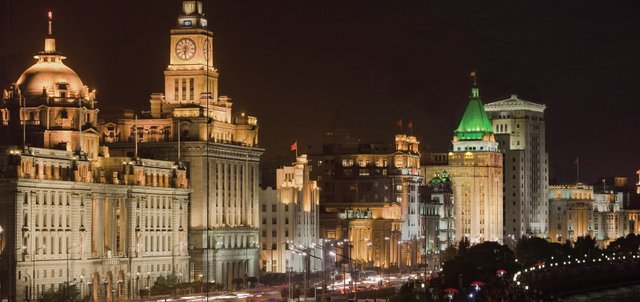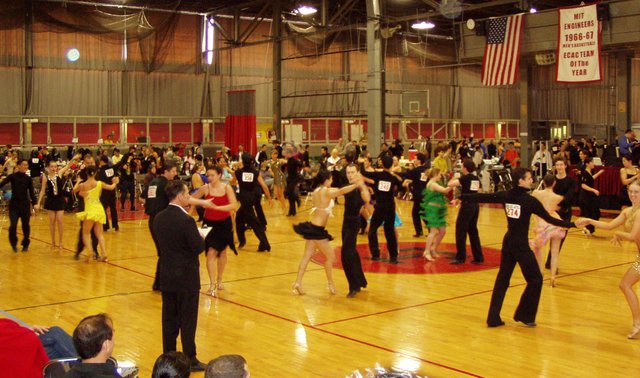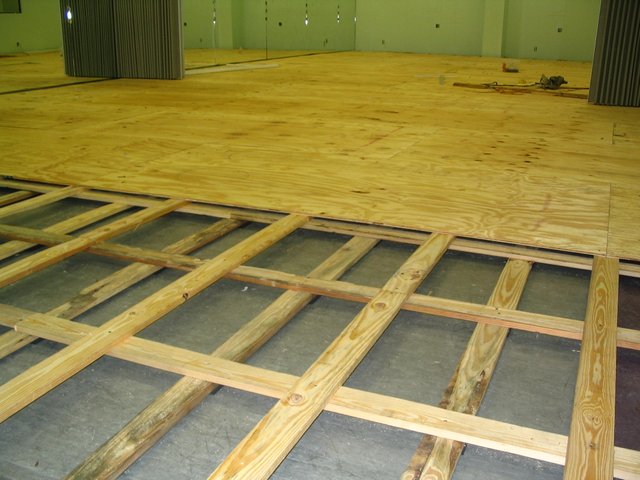What is a “Sprung” Ballroom Floor?
.jpg)
A very rare classical ballroom dance floor of the kind that the author witnessed in Shanghai, China, more than 20 years ago.
Have a look at my Steemit intro message! John - Tech Writer - In the Jungle Island of Taiwan!
OLD-WORLD NOSTALGIA
Movie gems such as Howard’s End, A Room with a View, and The English Patient are steeped with hints of old world Anglo-European traditions which are fading into oblivion under the onslaught of modern times.
For those of you who appreciate watching “period piece” movies of this kind, I have a nugget to share with you from those grand times gone by.
BALLROOM DANCING
Beginning in the 17th century and beyond, well-privileged people enjoyed attending social events featuring classical ballroom dances. Sporting styles such as the Quadrille, Minuet, Polonaise, and the Mazurka, these festivities must have been a treasure to behold. Continuing well on into the “Roaring Twenties” era, the breath-taking splendor of ballroom dancing held people captive throughout all parts of the world.
As an accompaniment to the proper etiquette and extravagant dress styles peculiar to a ball, there was also the space on which people danced. The requirement was simple: a large vacuous space that was to allow unabashed dancing for hours on end. Being the first of their kind, it’s no surprise that the early ballroom design fell short on the “dancing for hours on end” mien. However, that issue was later addressed by technology – as I will soon tell.
Among the lesser known destinations where one could think to find a classical ballroom: the bustling metropolis of Shanghai, in mainland China.

Pictured here is Shanghai's (green-topped) Peace Hotel on the old waterfront of the Huangpu River where the author saw his first old-time sprung dance floor.
BACK IN OLD SHANGHAI
Nearly two decades ago I lived for several years in Shanghai, and was witness to the city’s transformation from a little-known post-Mao seaport to the thriving financial and hemispheric trade hub it has now become. Upon moving there, I soon came to realize that I was a witness to the passing history of this wonderful city – and that I had best go out to see it as much as possible before it was gone.
Among Shanghai’s many landmark buildings is the old Peace Hotel. Erected in 1929 by Sir Victor Sassoon, a British citizen of Baghdadi Jewish descent, the hotel received famous guests from all parts of the world and served as a safe haven for contemporary thinkers, politicians, and writers such as Noel Coward – who composed Private Lives while living at the Peace Hotel.

Actually, basketball courts such as this one are great for dance, as they are sprung with modern materials that can takes the crashing and pounding of rough sports - let alone the soft-stepped activity of ballroom dancing seen here.
A DISCOVERY
On a weekend jaunt about the city, a friend of mine and I came upon the terminus of Nanjing Road in Shanghai’s famous Bund area overlooking the Huangpu River. The two buildings at this intersection comprise what is now known collectively as the Peace Hotel. At that time the hotel was closed and was evidently a wreck. It seemed to be undergoing some kind of renovation.
Ever ones to consider such off-limits territory as an open invitation, my friend and I didn’t hesitate to enter the premises. Upon going through the front door, we feigned an inability to understand (we both spoke fluent Mandarin) the hotel security guard’s nervous admonishments to leave the building.
As we climbed floor after floor up the front stairwell, my friend and I sadly observed the remnants of a former masterpiece of the Art Deco style. The classical Greek columns which shot upward everywhere once bore opulent decorations which we later learned had been defaced by officials of the Chinese Communist Party, who deemed such extravagances as being too “bourgeois”.

A modern rendition of the old sprung dance floor concept.
BEHOLD: A BALLROOM WITH A SPRUNG FLOOR
My friend and I stopped at one floor which immediately captured our attention: it was a ballroom. Grand and enticingly spacious, the ballroom floor beckoned us inward.
As I stepped onto what was obviously original woodwork, I noticed that it had a peculiar “give” to it that I had never encountered before. By merely walking across this floor, I felt as if I was walking on a cloud. The floor was springy, and it transformed my footfall into a nothing of effortlessness.
At this time I realized suddenly that I was standing on a relic of craftsmanship that no longer exists in these modern times: a sprung floor made for ballroom dancing.
I walked over and inspected a dilapidated section of the flooring. This part of the springy surface had been stripped of its fine wooden planking, and the resultant hole laid bare the ingenious design underneath. While some sprung floors of more advanced design used metal leaf springs or coils, I could see that the floors in this grand hotel used springs made of bent timber.
No doubt wishing to keep building costs down, the building’s original owner may have also been hard-pressed to find enough steel to make the springs needed to suspend such a large floor. I surmised Sir Victor Sassoon had used more readily available wood which he could have brought from China’s inland provinces.
I thought to myself: If only this room and these floors could tell their stories. The people they had seen, the hardship and joy they had been witness to during Shanghai’s tumultuous history. A history spattered by the occupation of enemy Japanese forces, the later expulsion of foreign invaders, and the strife brought on through civil war and revolutions.
Stories such as this, now gone…
FAREWELL… AND HELLO
After walking the length and breadth of this wonderful room, I walked away sadly, somehow knowing that this would probably be the last time any Westerner was to see this original flooring. On a visit to the hotel afterwards I saw that nearly all of the inner contents had been gutted.
After nearly two decades of stop-and-go efforts at restoration, Shanghai’s Peace Hotel was happily reopened in 2009.
Happy travels!